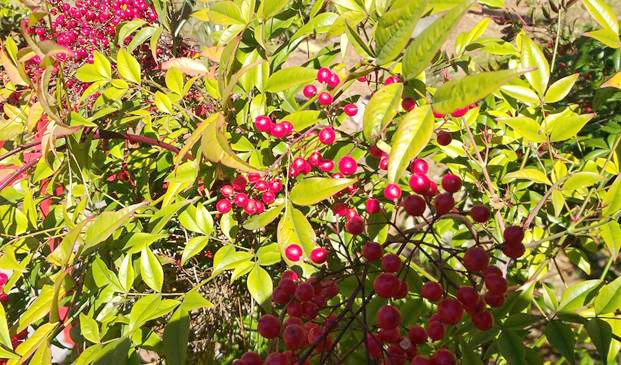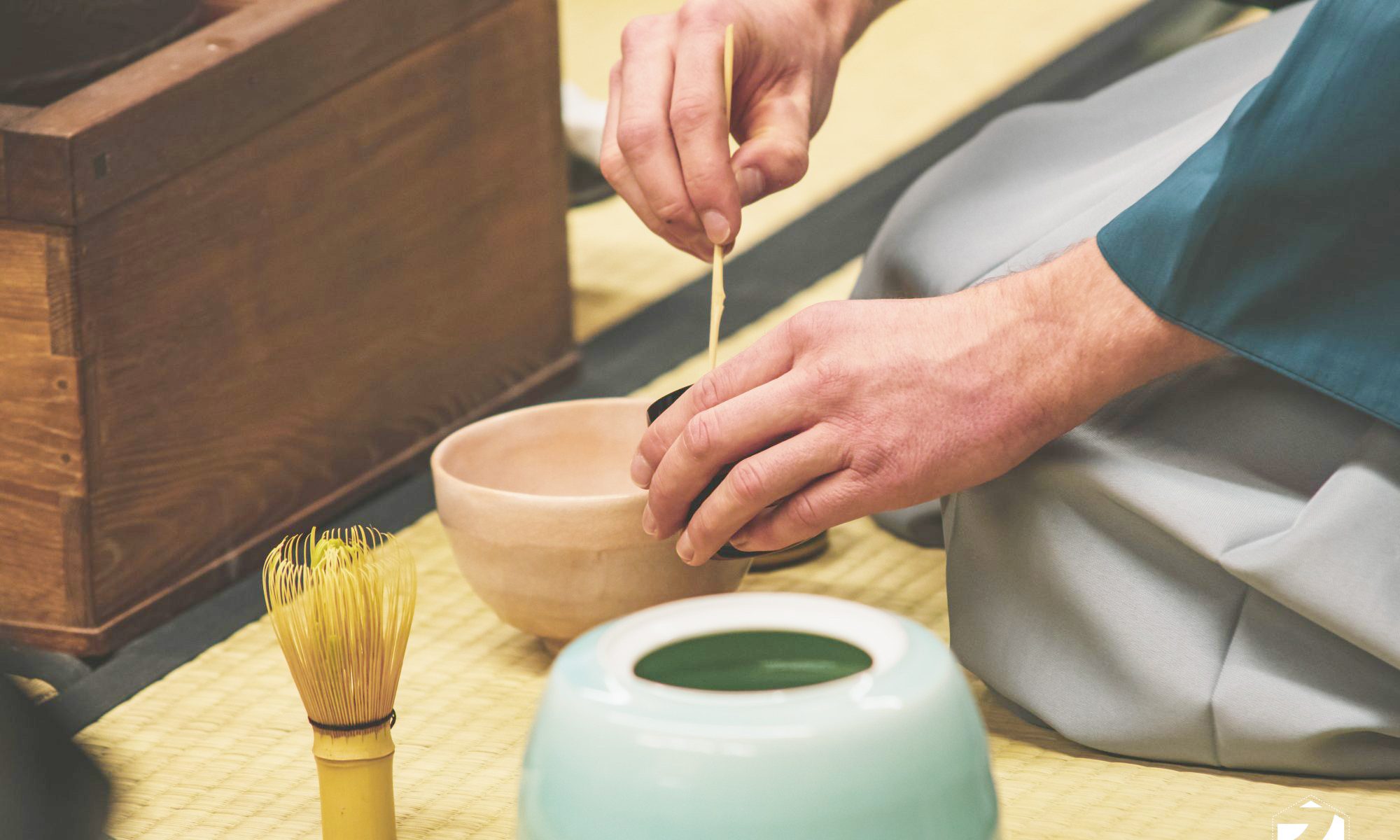
Nan-ten, 南天, is one of several plants associated with tea houses that Australian governments regard as environmental weeds. The photograph was taken in the garden of one of two Association members who have been found to be growing this environmental weed. Nan-ten means “southern sky.” However, in Japanese, nan-din, 難点, sounds like nan-ten but means difficult point or misfortune. For centuries it was planted in the north-eastern corner of gardens or by the gate to ward off evil spirits.
The scientific name is Nandina domestica Thunb. The famous Swedish naturalist, Carl Peter Thunberg, Latinized nan-ten to Nandina. Due to his medical and scientific reputation, Thunberg got the opportunity in 1776 to accompany the Dutch ambassador to the shogun’s court in Edo. During the journey from Nagasaki (where Thunberg was the head surgeon in the Dutch factory) to Edo, the Swede collected specimens of a great many plants and talked to Japanese locals in the villages along the way. In 1784, Thunberg wrote one of his scientific masterpieces, the Flora Japonica.
The epithet domestica reflects the frequent planting of nan-ten in gardens in Japan, and in Japanese-style gardens throughout the world. When planted next to houses and doorways, it is seen as a “home shrub,” serving to protect a household from harm. “Sacred bamboo” was also cut for use in traditional decorations. Its leaves, flowers and berries were used in ikebana. Another type of decoration, known as kadomatsu (literally “gate pine”), was used to celebrate the Japanese New Year. It combined Japanese black pine branches and the thick stems of true bamboo, cut at a sharp angle to reveal their hollow interiors. Nan-ten foliage and berries were often included. Such arrangements were usually placed on both sides of a doorway or gate. There, they would serve as a temporary home for the kami (gods) that bring abundant crops and good fortune to the household. Sprigs of nan-ten are used to garnish osechi ryori (New Year dishes).
In Europe, holly, Ilex aquifolium, has similar cultural uses in mid-winter to Nan-ten. Like Nandina, Ilex aquifolium has red spherical berries contrasting with green leaves. The hardy plant’s ability to stay vibrant through winter made it a natural choice for pre-Christian winter festivals. The Roman feast of Saturnalia, celebrated at the darkest time of the year, celebrated the god of agriculture, creation, and time, and the transition into sunshine and spring. Roman citizens festooned their houses with garlands of evergreens and tied cheery holly clippings to the gifts they exchanged.
For the Australian gardener, nan-ten has many attractions. It is adaptable, hardy, and without major pests or diseases. It tolerates full sun or part shade, and it is drought-tolerant once established. The appearance is interesting in all seasons, even without berries. The young leaves in spring are brightly coloured pink to red before turning green; old leaves turn red or purple again before falling. In early summer, it blooms with lots of white rice-like florets. It is easy to propagate because it sends out lots of runners.
Nan-ten has long been available in Australia for gardeners. In 1875 a Victorian nursery was advertising plants for 1s. 6d each, or about $3.50 in today’s prices. Unfortunately, several Australian governments now classify nan-ten as an environmental weed. According to the Queensland state government: Sacred bamboo (Nandina domestica) is regarded as an environmental weed in New South Wales and as a potential environmental weed or “sleeper weed” in other parts of Australia (i.e. Victoria and Queensland). This species is currently of most concern in the wider Sydney and Blue Mountains region in central New South Wales. It is currently not very widespread or common, but its abundance and range is increasing. Sacred bamboo (Nandina domestica) is listed as an environmental weed by the Blue Mountains City Council, and it is occasionally found in bushland edges and along drainage lines in this region. It has also been recorded in conservation areas in the Blue Mountains (i.e. Tunnel Gully Reserve) and in suburban Sydney (i.e. The Lakes of Cherrybrook in Hornsby Shire).
Visitors to the Dubbo Regional Botanic Garden will find that nan-ten has been planted near both gates to the Japanese tea garden and in the sensory gardens. It seems Dubbo Regional Council is unaware of the weed problem that other Australian local and state governments are facing.


